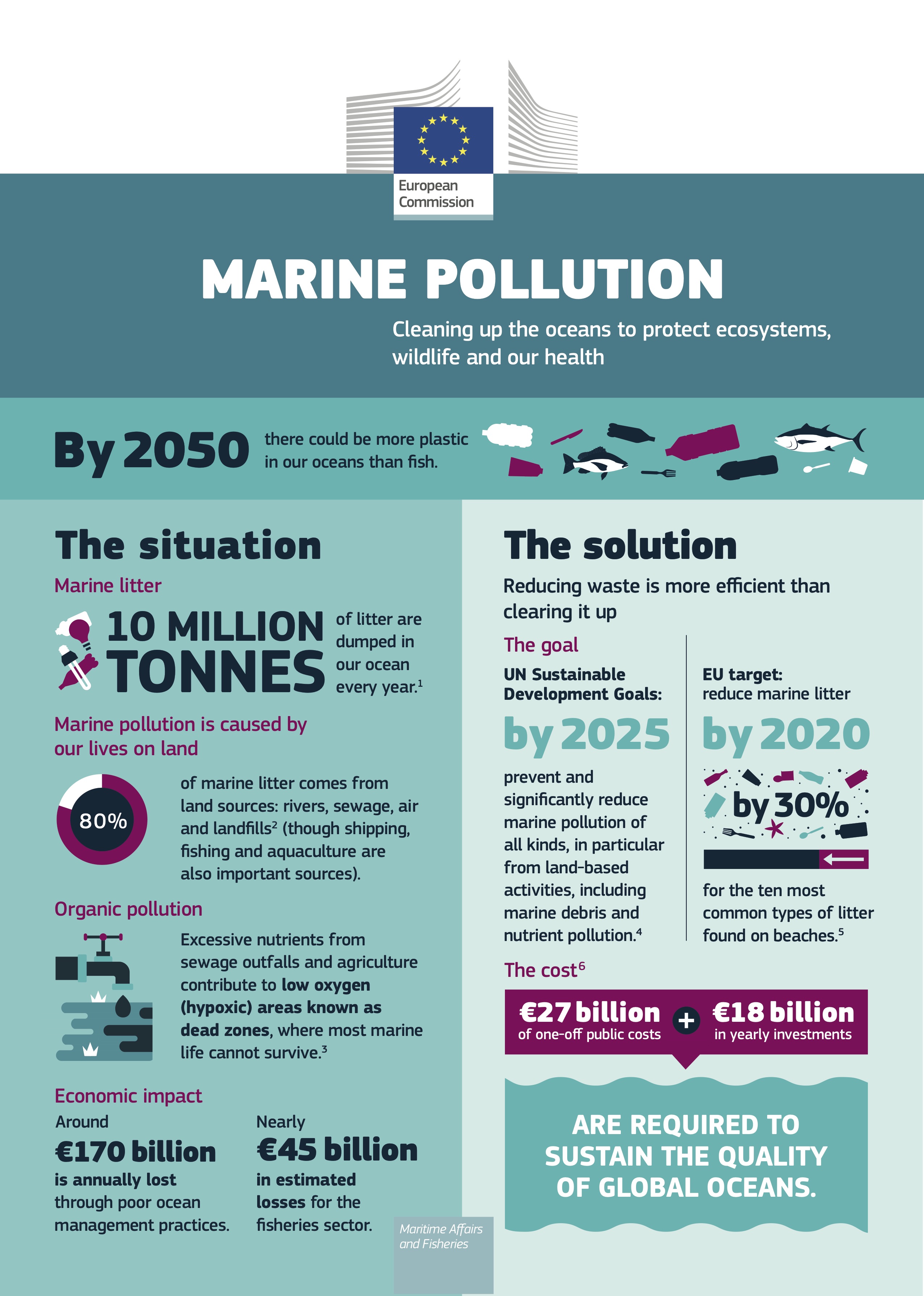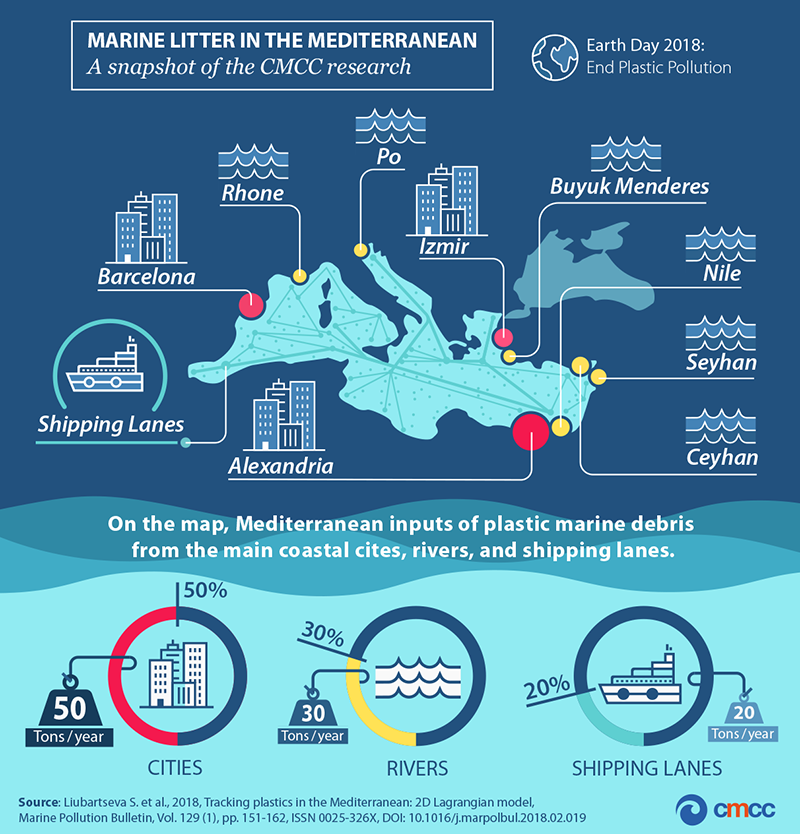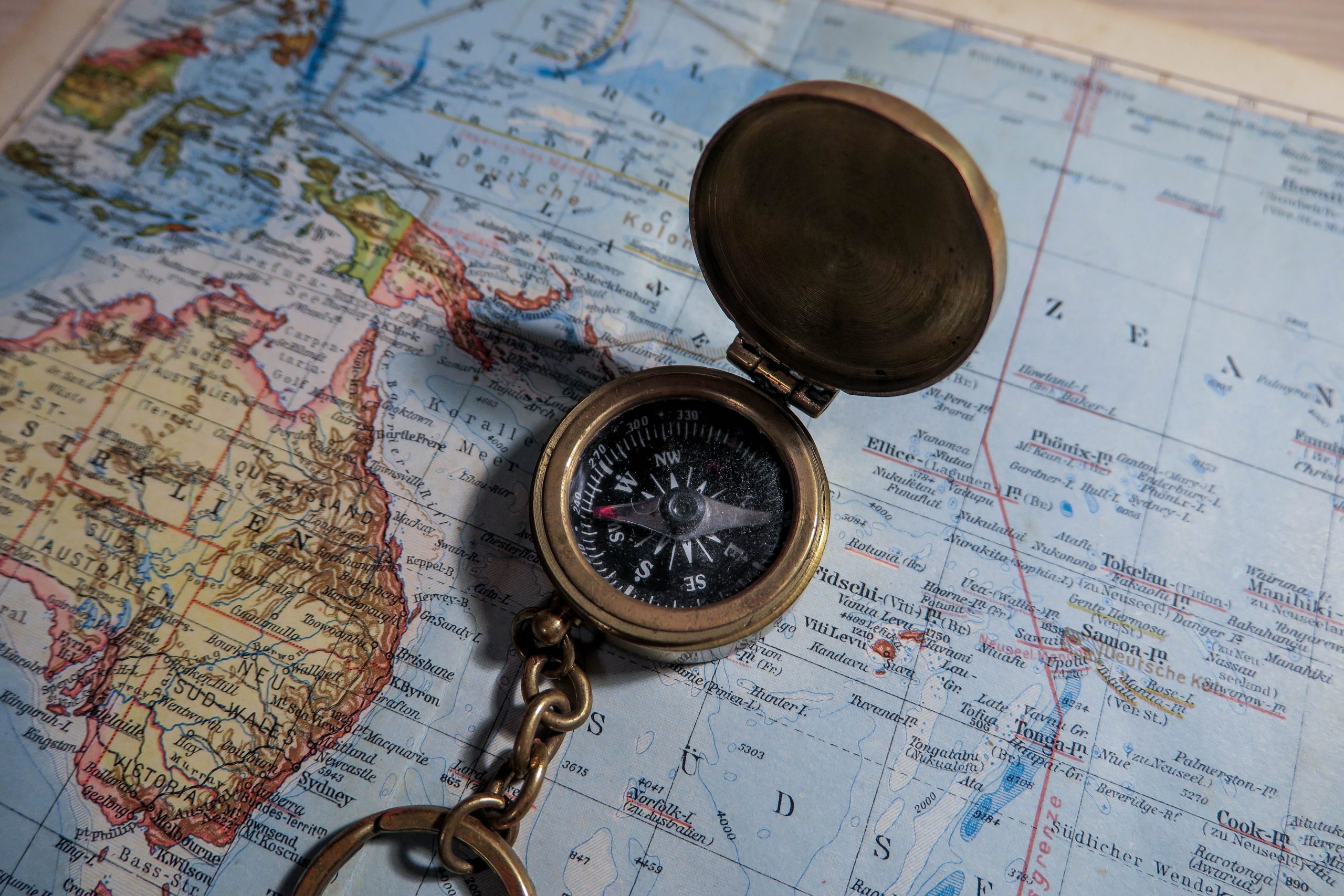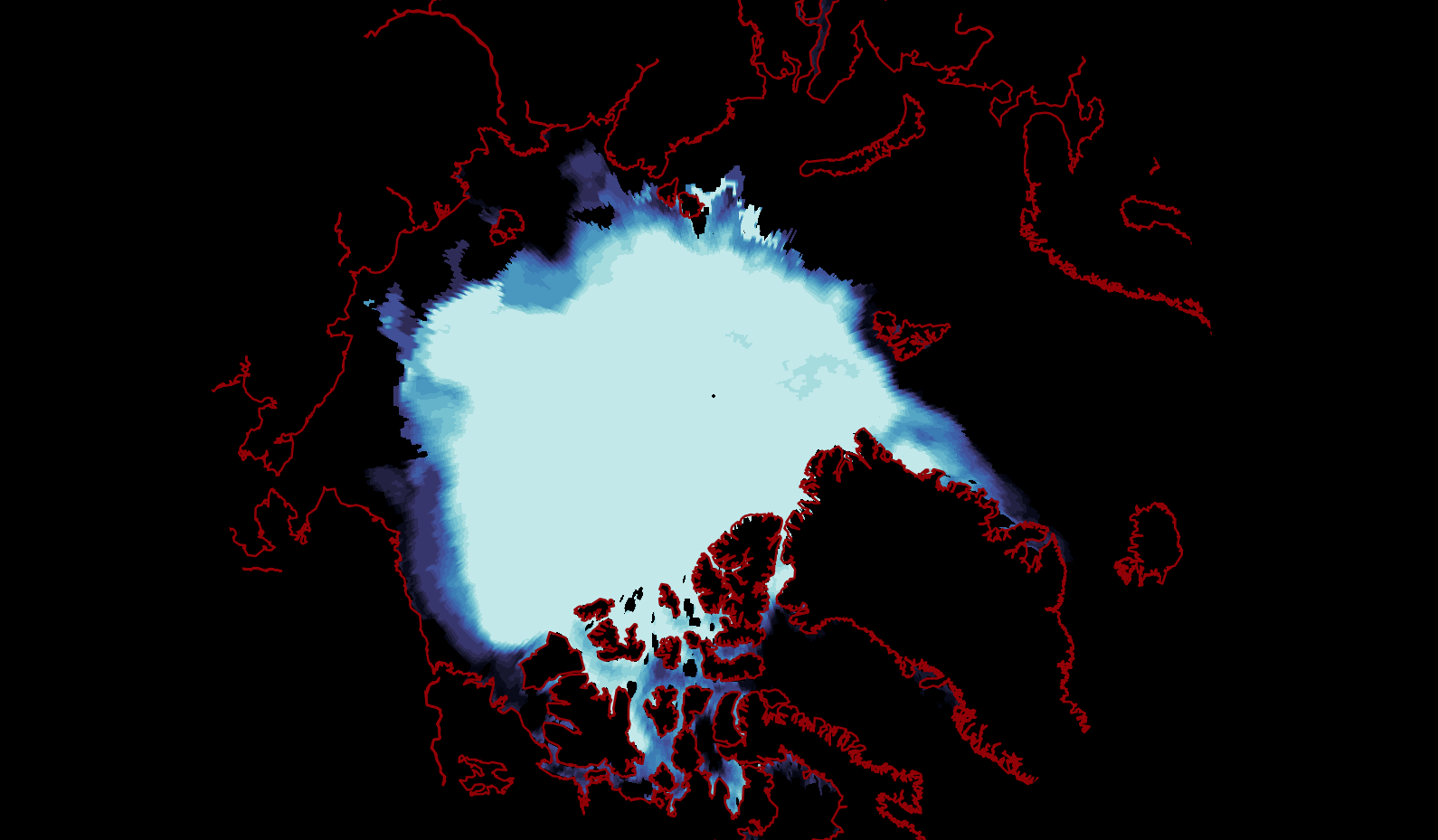By Katie Johnson and Selvaggia Santin
Take your pick: 822,000 times the Eiffel Tower, 25,000 the Empire State Building, or 80 million Blue Whales. These examples provide an idea of the total amount of small plastic fragments floating at the surface of the Ocean. Plastic pollution is pervasive in world oceans and has gained large attention from the media, the public and the governments. The urgency of this issue was recognized by nearly 200 countries that, in December 2017, signed jointly the UN draft Resolution on Marine Litter and Microplastics.
Actually, there is a lot of uncertainty about the distribution and the fate of plastic once it enters the ocean. A first global assessment of the total amount of small plastic fragments floating indicates that the total weight ranges between 93 and 236 million metric tons. It has been estimated that 8.3 billion metric tons of virgin plastic have been produced. With no action that volume is projected to be 1 kg of plastic for every 3 kg of fish and more plastic than fish by 2050.
Enlarge

http://ourocean2017.org/media-centre
About 30% of this 1 billion elephants worth of plastic weightning equivalent material is still in use, 10% has been incinerated and the remaining 60% has been discarded and is now landfilled or lost in the natural environment, including the ocean.
Among the large quantity of information available, it is difficult to differentiate exaggerated alarms from miracle solutions, while taking into account unknown but potential risks of plastic pollution. Scientific evidence shows a complex reality.
Upon entering the ocean, plastic goes through several processes of degradation that break up large items into microplastics (they are not visible to the eye). At the global level, most of the data on the abundance and mass of plastic particles in the ocean have been collected with fine trawled nets that do not efficiently sample smaller fragments. It is like pouring sand with a beach sieve that is not able to separate the smallest shells. This estimated amount of microplastic at the surface of the ocean represents approximately 1% of the 8 million metric tons of plastic waste that are estimated to enter the ocean from land-based inputs each year. Abusing the elephant metaphor, we can see 1 single elephant’s fur and not all the 1 billion elephants.
In terms of where this plastic ends up, data are currently missing on plastic concentration in the water column and in sediments. It is unknown where more than 95% of ocean plastic debris ends up. The future challenge is therefore to quantify how much is in there. Estimates of the amount of plastic that enters in each ocean compartment is necessary in order to be able to estimate the potential impacts of plastic pollution.
Looking at a smaller case, that of the Mediterranean Sea, more details emerge.
A total of 247 billion pieces of plastic are estimated to be floating in the Mediterranean Sea weighing 23,150 tons or the equivalent of 115 Blue Whales, with the surface plastic load estimated between 1,000 and 3,000 tons.
How does plastic pollution affect the Mediterranean Sea?
In the context of the global-scale distribution, the Mediterranean has some of the highest concentrations of floating plastics and microplastics in the world, and is even proposed as the sixth great accumulation zone for marine litter in addition to the five main ocean gyres. A total of 247 billion pieces of plastic are estimated to be floating in the Mediterranean Sea weighing 23,150 tons or the equivalent of 115 Blue Whales, with the surface plastic load estimated between 1,000 and 3,000 tons. The problem stems from the human pressure associated with the high concentration of people and economic activities along the coasts, combined with the hydrodynamics of the semi-enclosed basin, which together contribute to the accumulation of plastic in the Sea.
Where is it coming from?
Bordered by Europe to the north, Asia to the east, and Africa to the south, the Mediterranean Sea has marine litter entering from land based sources on twenty-one countries on three separate continents. Land sources constitute the majority of pollution and typically include tourism and recreational use of the coast, local industry and businesses, general public litter, illegal dumping, ports and harbors, and unprotected landfills. Ocean-based sources of marine litter, on the other hand, include merchant shipping, ferries and cruise liners, commercial and recreational fishing vessels, military fleets, research vessels, pleasure crafts, and offshore installations, like oil and gas platforms, drilling rigs, and aquaculture sites.
Of all marine litter, the total annual input of plastic into the Mediterranean Sea is currently estimated to be 100,000 tons per year: total coastal population inputs account for 50%, river-born plastic 30%, and inputs distributed along shipping lanes 20%.
In Europe, there is a fairly good understanding of the lifecycle of plastic. Plastics production, demand, and waste data provide insight on what plastics are made and used for, and where they end up at the end of their useful life. The highest share of the 2016 European plastic market was represented by packaging (39.9%), followed by building and construction (19.7%); the automotive industry (10%); electrical and electronics (6.2%); household, leisure, and sport (4.2%); agriculture (3.3%); and other uses such as appliances, mechanical engineering, furniture, and medical, to name a few (16.7%).
More plastic waste was recycled than landfilled in Europe for the first time in 2016 when over 8.4 million tons of plastic waste were collected to be recycled, including 27.1 million tons of post-consumer plastic waste – up 79% from 2006. Of the post-consumer plastic waste, 41.6% was used in energy recovery, 3.31% was recycled, and 27.3% was sent to landfills. Plastic waste recycling increased by almost 80% over the same 10-year period; energy recovery also increased by 61%, and landfilling decreased by 43%. The geographic trend is not uniform across Europe, and generally countries with more landfill restrictions on recyclable and recoverable waste see higher recycling rates of post-consumer plastic waste.
Where is it going?
In contrast to the ocean, any long-term accumulation of plastics at the sea surface in the Mediterranean would be unlikely. Research modeling the distribution of plastic finds substantial accumulation on the coastlines and to a lesser extent the sea bottom, noting that the plastic pollution of almost every country’s coastline is mainly caused by its own terrestrial sources of plastics. In the majority of Mediterranean countries more than 50% of plastics come from their own terrestrial inputs; especially high percentages are seen in Italy (almost 80%), Turkey, Morocco, Israel, Spain, France, Syria, Egypt, Albania, and Tunisia. Only Malta receives more maritime plastics (78%) than plastics from its own terrestrial sources.
In the Adriatic Sea – the northern branch of the Mediterranean Sea, modeling shows that floating debris distributions correspond to the spatial distributions of plastic debris inputs from rivers, cities, and shipping lanes over the long term, and indicates a strong connection with the general circulation patterns of the Adriatic Sea, following the Western Adriatic Coastal Current. Seasonally, plastics move to the basin’s interior in winter, to the northern Adriatic in spring, moving out of the middle and southern Adriatic in summer, and spread to the southeastern Adriatic in autumn. The shoreline of the Adriatic Sea is the main sink of floating debris; for example the coastline of the Po Delta in Italy receives a plastic flux of approximately 70 kg/km/day.
How can we monitor and reduce marine litter?
Researchers continue to define and explore the problem and potential solutions associated with marine litter and plastic pollution. In the Adriatic Sea, the first assessment of marine litter and strategy for reducing marine litter pollution were completed under DeFishGear, a project which also improved knowledge on microplastic pollution and a developed a regional network of experts. CMCC participated, focusing on the definition of optimal methodologies for monitoring marine litter. The overall project aim was to address the problem of marine litter and the economic impact on coastal communities. This included monitoring the quantity of microplastics and their effects on marine organisms, as well as setting up a system for collecting and recycling derelict fishing gear, and collecting floating litter and litter from the sea bottom caught in nets while fishing. A coordinated and integrated international approach was developed to measure and monitor marine litter and microplastics on the coasts as well as in the sea and on the seabed.
Can we clean up the plastic already in the ocean?
Numerous ideas and projects propose to recover plastic from the ocean, yet none have been proven. Some of the initiatives include ocean clean up arrays, various types of plastic eating drones, and vessels that propose to remove plastic litter from the surface of the ocean. These methods only target surface floating plastic fragments and generally are not able to collect plastic particles smaller than 1 cm. This means that they leave out more than 99% of plastic estimated to be in the ocean. Therefore the amount of plastic that could be removed by these innovations is infinitesimal when considered against the plastic already in the ocean and that continues to enter the ocean every day.
What’s the outlook?
According to UNEP, the most urgent short-term solution to reducing plastic inputs into the ocean is the improvement of wastewater and solid waste collection and management. Reducing mismanaged plastic waste mainly requires implementing adequate infrastructure and waste management practices as well as educating behaviours of consumers. On the longer term, a more sustainable solution will be moving towards a more circular economy, in which waste is designed out of the production and use cycle, and society adopts more sustainable consumption patterns. For example: reduce the use of single-use plastic items, and phase out microbeads in cosmetics and other products where it can be substituted with non-harmful alternatives.
As reducing, reusing, and recycling are the best ways to limit the amount of plastics that end up as marine litter, it appears that Europe is making progress to decrease the amount of plastic that could potentially enter the Mediterranean Sea as pollution. In terms of policy, improving resource efficiency is a large part of Europe’s work towards achieving a circular economy, and addressing the lifecycle of plastics is a critical step along the way. Particularly, the Marine Strategy Framework Directive obliges European member states to monitor and reduce their marine litter. Yet, the problem of plastic pollution is great, and much work is needed to eliminate plastic pollution as a component of marine litter at the source.







